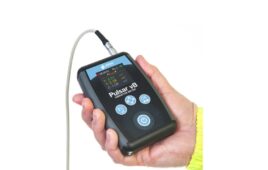With a multi–axis sensor design, a single load cell sensor can measure 3 axes of force and 3 torque moments simultaneously. These sensors consist of multiple bridges that precisely measure the applied force from one direction with minimal crosstalk from the other axes. Using a multi-axis sensor, forces can be measured simultaneously in three mutually perpendicular axes with the 6-axis load cells also measuring torque around those axes.
The design and test process for a simple chair used in a kitchen table set demonstrates how multi-axis force data helps improve product design. Typically, these chairs are stress tested to simulate the effects of a person sitting down hundreds of thousands of times over many years. According to Keith Skidmore, Custom Solutions Engineer & Sales Director at Interface, “In the past, force sensors were used to simply measure the effects of force on the legs of the chair or the back rest.”
Since all the forces could not be measured at the same time, unknown variables were still present. As a result, the data did not provide a complete picture of the effects of force.
With a multi-axis sensor, the chair designer or engineer can measure force in every direction simultaneously to gather data on the stress test’s impact for the whole chair. Using this data, the user can identify weak points or flaws that wouldn’t have been identified before. This data is critical to improving the quality and reliability of the chair.
This same approach can be applied to the development of other, more complex products. In fact, data-driven test and measurement is at the forefront of product development, especially in highly regulated markets like aerospace, automotive, medical and industrial. Today, one of the most significant applications for multi-axis sensors occurs in manufacturing facilities that want to integrate more autonomy and robotic processes.
The Interface 6A Series 6-Axis Standard Capacity Load Cell is an example of a product to perform these tests. It includes a 36-term coefficient matrix for calculating the load and torque values in each axis. To simplify data analysis, an 8-channel amplifier with a USB PC interface is also available.
Filed Under: Sensor Tips




